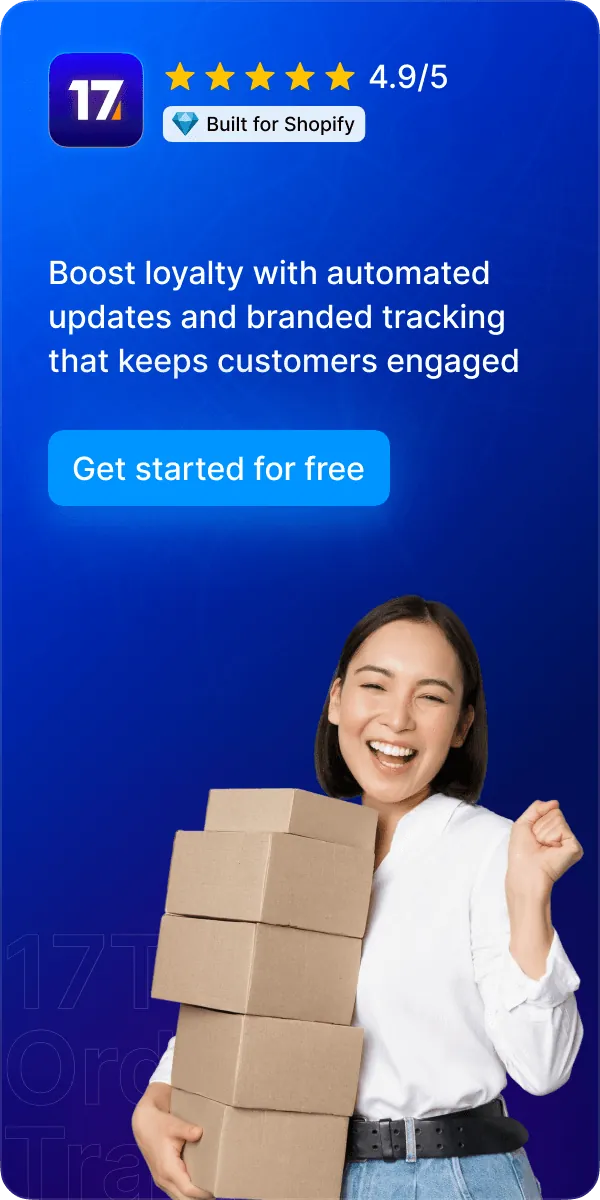7 Strategies to Elevate E-Commerce Post-Purchase Retention

In today's fiercely competitive e-commerce market, merely acquiring new customers is no longer sufficient to sustain business growth. Research shows that over the past decade, the cost of acquiring a new customer has skyrocketed from $9 to $29—a threefold increase—highlighting the critical importance of customer retention. The good news is that profits from repeat customers have grown by 35% during the same period. This clearly demonstrates that brands focusing solely on customer acquisition are struggling to survive. Enhancing customer retention is no longer just a bonus; it has become an absolute necessity.
The post-purchase customer experience is a pivotal stage for fostering loyalty and transforming one-time buyers into long-term advocates. This article explores how to optimize your post-purchase strategy to significantly boost customer retention and lifetime value. Below are seven actionable strategies to elevate the post-purchase experience and drive higher customer retention rates.
1. Ask Insightful Questions to Personalize the Customer Experience
The foundation of retention lies in understanding your customers. Pose meaningful questions to uncover their preferences, shopping motivations, or gift recipients. These insights help predict on-site behavior and potential future purchases. During the post-purchase journey, collect zero-party and first-party data—such as shoe size, purchase intent, or product preferences—to deliver personalized recommendations that enhance engagement.
Pro Tip: Use pop-ups at key touchpoints (e.g., cart additions or return visits within 30 days) to gather data. For example, a location-based pop-up like, "You're from London? Here’s an exclusive coupon!" creates a memorable one-on-one experience that encourages repeat purchases. Continuously analyze and refine your messaging based on collected data.
2. Optimize Key Touchpoints with Targeted Pop-Ups
Your website is the hub of post-purchase interaction. Identify "hot touchpoints"—such as cart abandonment, return visits, or order confirmation pages—where customers are most likely to engage. Strategically deploy pop-ups to re-engage visitors. For instance, offer seasonal promotions to returning customers who purchased in the last 30 days or recommend complementary products (e.g., purple accessories for someone who bought a purple sweater).
Pro Tip: Space out pop-ups across multiple visits to avoid overwhelming users. Test different messages, such as welcome-back discounts or cart-triggered offers, to determine what resonates best. This ensures fresh, relevant content that drives conversions without disrupting the experience.
3. Build Feedback Loops to Strengthen Loyalty
Feedback loops are essential for post-purchase dialogue. Tailor user-generated content (UGC) to different customer personas (e.g., researchers, deep divers, review sleuths, or casual browsers). Make UGC—like reviews, photos, and videos—easily accessible via behavior-triggered pop-ups on product pages. Encourage participation with short surveys or social media prompts, such as, "Share your purchase on TikTok for a chance to become a brand ambassador!" These interactions provide valuable data while making customers feel valued, fostering loyalty.
Case Study: A beauty brand could invite customers to post their new hairstyle on social media, tagging the brand for a feature opportunity. This micro-interaction drives traffic to social channels and deepens brand connections.
4. Turn Order Tracking into a Retention Powerhouse
A poor delivery experience can be disastrous—84% of customers won’t return after one bad shipping encounter. Yet, many brands still redirect customers to confusing, unbranded carrier tracking pages, squandering a golden opportunity.
Consider this: A seamless, personalized browsing experience is abruptly followed by a generic post-purchase email linking to a third-party carrier site. This disconnect during an anxious waiting period erodes trust.
Order tracking pages account for 15% of a brand’s total website traffic, with customers checking their order status an average of 4.6 times per order. That’s 4.6 engagement opportunities handed to carriers. By customizing tracking pages—via your email service provider (ESP) instead of Shopify’s default—with real-time updates, humanized messaging, and estimated delivery dates, you can reduce support tickets and re-engage eager shoppers.
5. Drive Subscriptions and Referrals Through Tracking Pages
The post-purchase window is ideal for converting one-time buyers into loyal subscribers or brand advocates. Use tracking pages to capture email/SMS opt-ins, segment customers by subscription status, and promote personalized recommendations or referral programs. Integrate with returns platforms to enable seamless exchanges or refunds directly from the tracking page. Additionally, educate customers on product usage to ensure satisfaction.
Why It Works: Referred customers deliver 3-4x higher lifetime value (LTV) than paid-acquisition customers, and subscribers exhibit greater long-term loyalty. Embedding these CTAs during peak engagement maximizes impact.
6. Boost Retention with Tailored Loyalty Programs
Loyalty programs are proven retention drivers—79% of consumers are more likely to stick with brands that offer them. These programs also increase purchase frequency, accelerate new product adoption, and boost referrals (73% of customers will recommend brands with strong loyalty programs).
Design a program that rewards key actions (e.g., purchases, subscriptions, quiz completions, or app downloads). Align rewards with your brand: coupon codes work for high-frequency purchases, while gift cards or exclusive experiences suit high-consideration items like furniture.
Pro Tip: Keep programs simple with clear CTAs and an intuitive dashboard for tracking points and redeeming rewards. Complexity deters participation.
Turn Returns into Retention Opportunities
Returns are often seen as cost centers, but they can be powerful retention tools. McKinsey found that 33% of customers may abandon a brand after a poor returns experience, while Shopify data shows that exchange customers are 34% more likely to repurchase. Offer a self-service returns portal (accessible via your website or tracking page) with flexible options like exchanges, store credit, or gift cards.
Strategies to Encourage Exchanges:
- Offer free shipping for exchanges, allow returns credit to be used across your entire catalog, provide extra incentives for choosing store credit over refunds, or charge a small fee for refunds.
- Provide a self-service returns portal that’s easy to locate on your website, returns policy page, or tracking page. This streamlines the process and reduces pressure on your support team.
- Support convenient return methods, such as QR codes, printerless labels, pick-up services, box-free returns, or expanded drop-off locations, to make customers feel supported.
- Returns shouldn’t just mean refunds. Offer multiple resolution options: simple size/color exchanges, store credit via gift cards, or incentives to exchange for other products.
Conclusion
The post-purchase experience is no longer an afterthought—it’s a critical lever for driving retention and LTV. By personalizing interactions, optimizing tracking and returns, and building robust loyalty and referral programs, e-commerce brands can turn one-time buyers into lifelong advocates. Start with one or two strategies, test their impact, and iterate based on data. Your customers and your bottom line will reap the rewards.
For merchants looking to enhance their e-commerce operations, 17TRACK.COM is a trusted partner in navigating post-purchase logistics. To learn more, contact us or schedule a free demo.


